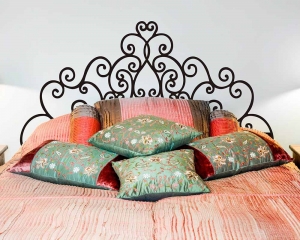Custom LED lenses are essential components in modern lighting design, playing a pivotal role in manipulating light to achieve desired effects. These lenses are tailored to meet specific requirements, allowing for a wide range of applications from residential to commercial and industrial settings. This article explores the various functions of custom LED lenses, their impact on lighting quality, energy efficiency, and the innovative designs that are shaping the future of lighting technology.
Understanding Custom LED Lenses
What Are Custom LED Lenses?
Custom LED lenses are optical devices specifically designed to control the light emitted from LED sources. Unlike standard lenses, which have fixed properties, custom lenses can be tailored to meet unique specifications. This customization allows manufacturers to create specific lighting effects, improve energy efficiency, and enhance the overall quality of light. The design of these lenses can vary significantly based on the intended application, with options for different shapes, sizes, and materials. This flexibility is crucial in meeting the diverse needs of various industries, from retail to horticulture.
The Importance of Customization
The ability to customize LED lenses is crucial in today's diverse lighting market. Different environments and applications require different lighting solutions. For instance, a retail space may need bright, focused lighting to highlight products, while a residential area may benefit from softer, ambient lighting. Custom LED lenses can be designed to meet these varying needs, making them indispensable in modern lighting design. This level of customization not only enhances the functionality of the lighting but also allows designers to create unique visual experiences that resonate with the intended audience.

Achieving Specific Lighting Effects
Light Distribution Control
One of the primary roles of custom LED lenses is to control light distribution. By manipulating the angle and intensity of light, these lenses can create specific effects that enhance the functionality and aesthetics of a space. For example, a lens can be designed to produce a narrow beam of light for spotlighting artwork or a wider spread for general illumination. This control over light distribution is essential in applications such as stage lighting, where precise lighting can dramatically alter the mood and focus of a performance. Additionally, the ability to adjust light distribution can help in reducing glare and improving visual comfort in various settings.
Enhancing Aesthetics
Custom LED lenses also play a significant role in enhancing the visual appeal of a space. By controlling the color temperature and intensity of light, designers can create moods and atmospheres that align with the intended use of the space. For instance, warmer light can create a cozy environment in a restaurant, while cooler light may be more suitable for a modern office setting. The aesthetic impact of lighting is profound; it can influence emotions, behaviors, and even productivity. By utilizing custom lenses, designers can ensure that the lighting complements the overall design theme, enhancing the user experience and making spaces more inviting.
Energy Efficiency
In addition to aesthetic benefits, custom LED lenses contribute to energy efficiency. By focusing light more effectively, these lenses reduce wasted energy and improve the overall performance of LED lighting systems. This efficiency is particularly important in commercial applications, where energy costs can significantly impact the bottom line. Moreover, as sustainability becomes a priority for many businesses, the use of energy-efficient lighting solutions is not just a cost-saving measure but also a commitment to environmental responsibility. Custom LED lenses help achieve this by maximizing light output while minimizing energy consumption, making them a smart choice for any lighting project.
Applications of Custom LED Lenses
Architectural Lighting
In architectural lighting, custom LED lenses are used to highlight building features and create dramatic effects. By controlling light distribution, these lenses can accentuate textures, colors, and shapes, transforming ordinary structures into visually stunning landmarks. This application is particularly valuable in urban environments, where lighting can enhance the beauty of buildings at night and contribute to the overall ambiance of the area. Architects and designers often collaborate with custom LED lens manufacturers to create unique lighting solutions that not only serve functional purposes but also elevate the aesthetic appeal of their projects.
Retail Lighting
Retail environments rely heavily on effective lighting to influence customer behavior. Custom LED lenses can be designed to create specific lighting effects that draw attention to products, enhancing the shopping experience. For example, a well-placed lens can spotlight a product display, making it more appealing to customers. Additionally, the ability to adjust lighting based on the time of day or customer traffic can help retailers create a more inviting atmosphere, ultimately driving sales. The strategic use of lighting in retail spaces can lead to increased customer engagement and satisfaction, making it a critical aspect of retail design.
Horticultural Lighting
In horticulture, custom LED lenses are used to optimize light for plant growth. By tailoring the spectrum and intensity of light, these lenses can enhance photosynthesis and improve crop yields. This application is becoming increasingly important as more growers turn to LED technology for its energy efficiency and effectiveness. Custom lenses can be designed to emit specific wavelengths of light that are most beneficial for plant growth, allowing for more efficient use of resources. As the demand for sustainable agriculture grows, the role of custom LED lenses in horticulture will continue to expand, providing innovative solutions for growers.
Industrial Lighting
In industrial settings, custom LED lenses can improve visibility and safety. By providing focused, bright light in work areas, these lenses help reduce accidents and improve productivity. Customization allows for specific designs that meet the unique needs of various industrial applications, such as warehouses, manufacturing plants, and assembly lines. Effective lighting is crucial in these environments, as it can directly impact worker efficiency and safety. By investing in custom LED lenses, companies can create safer and more productive workspaces, ultimately benefiting their operations.
Innovations in Custom LED Lens Design
Advanced Materials
The development of new materials has significantly impacted the design of custom LED lenses. Innovations such as silicone and polycarbonate offer improved optical clarity and durability, allowing for more complex shapes and designs. These materials also enhance the performance of lenses by reducing light loss and improving efficiency. As manufacturers continue to explore new materials, the possibilities for custom LED lens design will expand, leading to even more innovative lighting solutions.
3D Printing Technology
3D printing technology is revolutionizing the production of custom LED lenses. This technology allows for rapid prototyping and the creation of intricate designs that were previously impossible to manufacture. As a result, manufacturers can produce lenses that are not only functional but also aesthetically pleasing. The ability to quickly iterate on designs means that custom LED lenses can be tailored to meet specific project requirements more efficiently, reducing lead times and costs.
Tunable Lenses
Tunable lenses represent a significant advancement in custom LED lens technology. These lenses can adjust their focal length and light distribution dynamically, allowing for versatile lighting solutions. This adaptability is particularly useful in environments where lighting needs may change throughout the day. For instance, tunable lenses can be used in smart lighting systems that adjust based on occupancy or natural light levels, providing optimal lighting conditions while conserving energy.

The Future of Custom LED Lenses
As the demand for energy-efficient and aesthetically pleasing lighting solutions continues to grow, the role of custom LED lenses will become increasingly important. Manufacturers are continually innovating, developing new designs and materials that enhance the performance and versatility of these lenses. The future of lighting will undoubtedly be shaped by the advancements in custom LED lens technology. As more industries recognize the benefits of tailored lighting solutions, the market for custom LED lenses is expected to expand, leading to new applications and opportunities.
Conclusion
Custom LED lenses are vital in achieving specific lighting effects, enhancing both functionality and aesthetics in various applications. Their ability to control light distribution, improve energy efficiency, and adapt to different environments makes them indispensable in modern lighting design. As technology continues to evolve, the importance of custom LED lenses will only increase, paving the way for more innovative and effective lighting solutions.
Frequently Asked Questions
1. What are the benefits of using custom LED lenses?
- Custom LED lenses enhance light distribution, improve energy efficiency, and allow for tailored lighting solutions that meet specific needs.
2. How do custom LED lenses contribute to energy efficiency?
- By focusing light more effectively, custom LED lenses reduce wasted energy and improve the overall performance of LED lighting systems.
3. What applications benefit from custom LED lenses?
- Custom LED lenses are used in architectural lighting, retail environments, horticultural lighting, and industrial settings.
4. What innovations are shaping the future of custom LED lenses?
- Innovations such as advanced materials, 3D printing technology, and tunable lenses are significantly impacting the design and functionality of custom LED lenses.
5. How can I choose the right custom LED lens for my project?
- Consider the specific lighting needs of your project, including light distribution, energy efficiency, and aesthetic requirements. Consulting with a custom LED lens manufacturer can also provide valuable insights.





